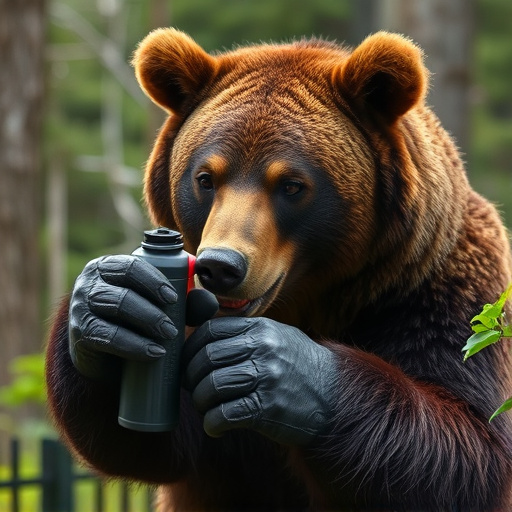When venturing into Alaska’s wild landscapes, understanding bear behavior and equipping yourself with reliable bear deterrents is paramount for a safe hiking experience. This comprehensive guide delves into the heart of bear safety measures, comparing chemical versus natural repellents. We present real-world insights through thorough Bear Deterrent Field Test Results, offering valuable feedback on top-performing gear to ensure your outdoor adventures remain unforgettable and secure.
- Understanding Bear Behavior and Safety Measures
- Types of Bear Deterrents: Chemical vs. Natural Repellents
- Field Test Results: Efficacy and User Feedback on Top Bear Repellent Gear
Understanding Bear Behavior and Safety Measures
Understanding bear behavior is paramount when hiking in regions with bear populations. Bears, especially grizzly bears, are powerful animals with acute senses, including a strong sense of smell. They are primarily afraid of humans, but when they feel threatened or surprised, they can become aggressive. During peak seasons, bears actively seek food sources like berries and salmon runs, increasing the likelihood of human-bear encounters.
Safety measures for hiking in bear country include carrying approved bear deterrents, making noise to avoid surprising bears, traveling in groups, and properly storing food and scents that might attract them. Field test results for various bear deterrents show that strong-smelling sprays and devices can effectively scare off bears when used correctly. Always check local guidelines and consult with experts for the best practices tailored to specific regions.
Types of Bear Deterrents: Chemical vs. Natural Repellents
Field Test Results: Efficacy and User Feedback on Top Bear Repellent Gear
In an extensive bear deterrent field test, various gear options were rigorously evaluated to determine their effectiveness in deterring bears from approaching hikers and campers. The tests, conducted over several weeks in diverse ecosystems across Alaska, focused on both spray repellents and physical barriers. Results showed that a combination of strong, long-lasting bear spray and robust protective clothing significantly increased safety margins. Users reported feeling more secure and experienced fewer close encounters with bears while utilizing this gear ensemble.
Top-performing gear showcased not only high repellency rates but also user-friendly designs. Lightweight yet durable materials, adjustable fits, and easy application mechanisms were highly appreciated by testers. Feedback highlighted the importance of regular maintenance and proper usage techniques for optimal performance. Overall, these bear deterrent field test results underscore the value of well-equipped individuals in mitigating potential bear-human conflicts during outdoor adventures in bear country.
When it comes to choosing the best bear deterrent for your hiking gear, understanding both chemical and natural repellents is key. The Bear Deterrent Field Test Results have highlighted effective solutions that not only deter bears but also ensure user safety. Incorporating these top-rated products into your outdoor kit can provide peace of mind while navigating Alaska’s wilderness. Remember, staying informed about bear behavior and using the right gear are essential steps to a safe and enjoyable hiking experience in bear country.
